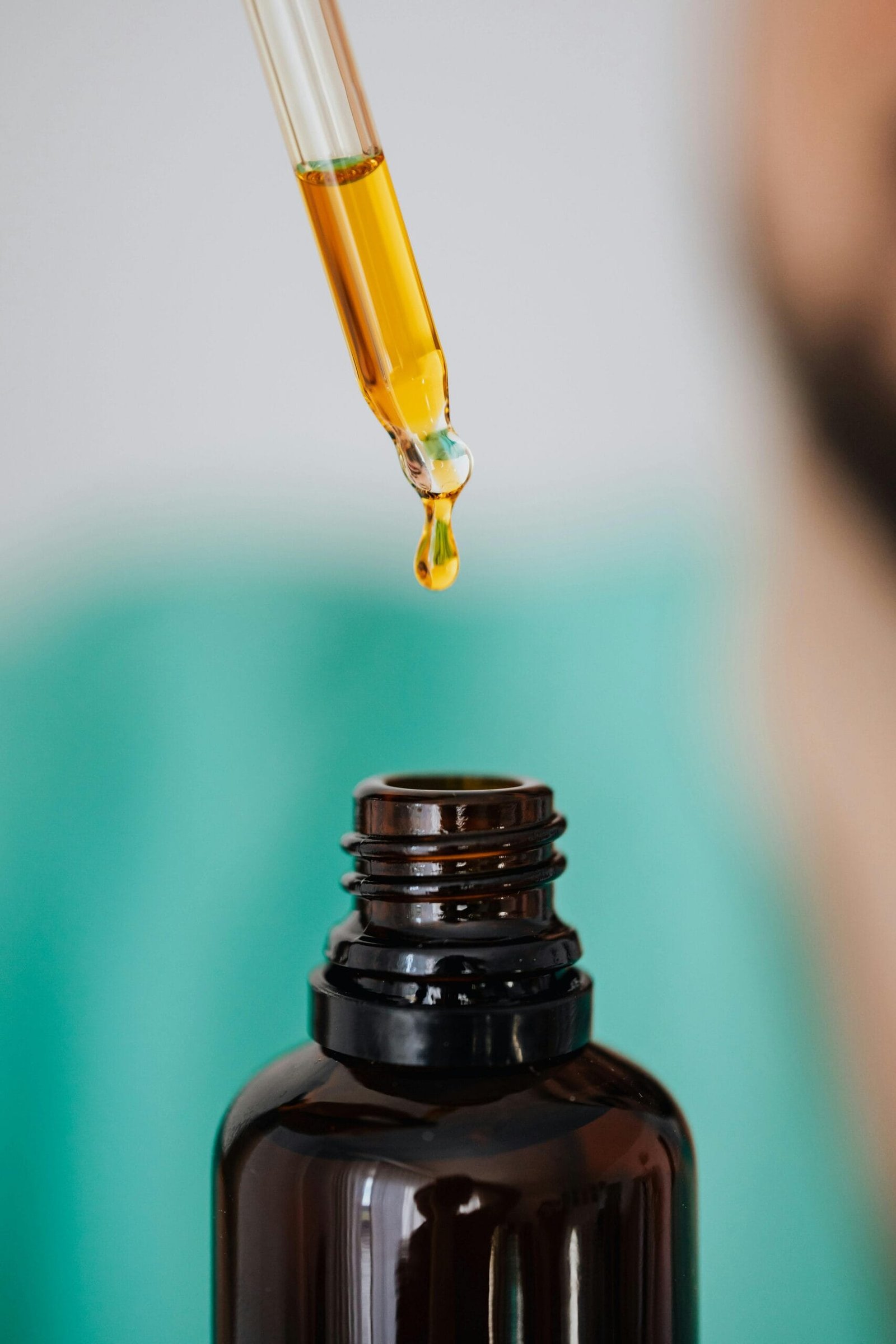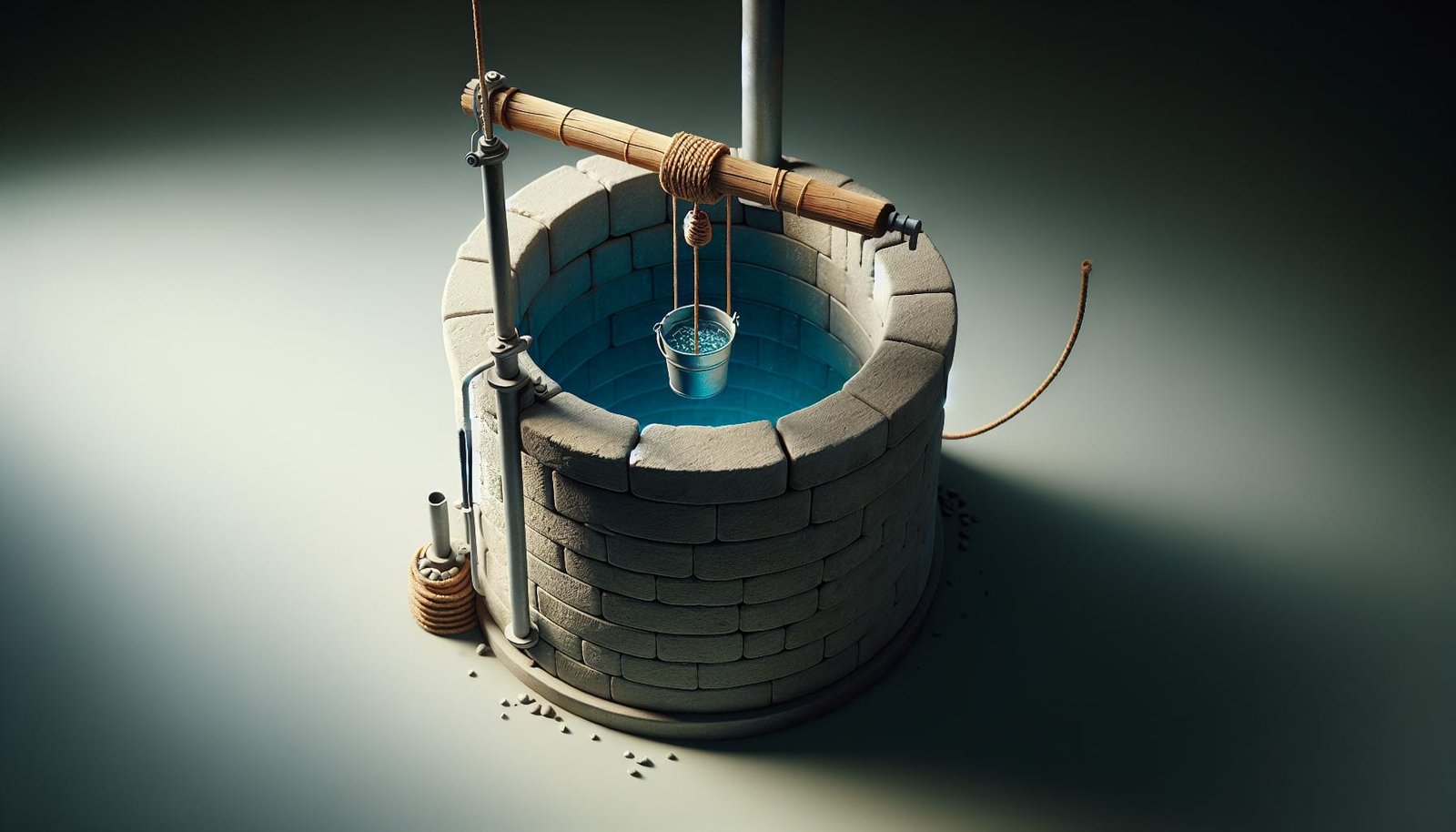Have you ever wondered what happens underground to bring water up into your home when you turn on the tap?

How Do Residential Water Wells Work?
You rely on wells to supply water when a municipal system isn’t available. This section gives you a clear, friendly overview of the physical system, how water is drawn, and the main parts involved so you can understand what’s happening beneath your property.
The basic idea: aquifers, water table, and well access
You get water from porous or fractured rock layers called aquifers that hold groundwater. The water table marks the top of the saturated zone. A well is a drilled, driven, or dug hole that reaches the aquifer and provides an access point to pump that groundwater to the surface.
Main components of a residential well system
A functioning well system includes the well bore and casing, the well screen or intake, a pump, a drop pipe, a pressure tank, a pressure switch, and a sanitary well cap. Each piece plays a role in keeping water available, pressurized, and safe for your household.
Types of Residential Wells
You’ll encounter different well types depending on geology, water depth, and local drilling practices. Each type affects yield, cost, and maintenance.
Dug wells
Dug wells are shallow and excavated by hand or machinery. You might have one on older properties. They’re more vulnerable to contamination and seasonal drying, so you’ll need extra vigilance with protection and testing.
Driven wells
Driven wells use pipe and a point driven into unconsolidated ground. They’re typically shallow (tens of feet) and used where shallow aquifers are productive and clean. They’re affordable but limited in depth and yield.
Drilled wells
Drilled wells are the most common modern approach and can reach hundreds of feet into bedrock or deep aquifers. Rotary or percussion drilling methods create stable boreholes, and casing plus screens are installed to access productive zones while keeping the borehole intact.
Well Construction and Components
You’ll find several distinct parts in a properly constructed well. Understanding them helps you maintain, troubleshoot, and discuss issues with contractors.
Well casing and grout
The casing is a pipe (usually steel or PVC) that stabilizes the hole and prevents surface contaminants from entering the aquifer. The annular space between casing and borehole is grouted (cemented) to create a sanitary seal.
Well screen or intake
Screens allow groundwater to enter the well while keeping sand and gravel out. The type and slot size of the screen must match the formation to avoid sand pumping and premature failure.
Well cap and sanitary seal
A secure, vented sanitary well cap prevents insects, small animals, and surface water from entering the well. Seals and collars at the surface further reduce contamination risk.
Drop pipe and pump
The drop pipe carries water from the pump to your pressure tank and home. Pumps may be submersible (inside the well) or above-ground jet pumps (for shallow wells). The pump type depends on depth and required flow.
Pressure tank and switch
A pressure tank stores water under pressure so the pump doesn’t cycle constantly. The pressure switch turns the pump on and off at set pressure points (e.g., on at 30 psi, off at 50 psi).
How the System Works (Step-by-step)
You’ll find the well system works in a simple cycle that exploits pressure, storage, and the aquifer’s recharge.
- Before pumping, the well has a static water level. That’s the water level when the pump is off.
- When water is needed, the pressure in the tank drops to the pump’s cut-in pressure and the pump starts.
- The pump draws water up the drop pipe into the pressure tank and the house plumbing.
- The pump continues until the pressure reaches the cut-out setting and then stops. The tank’s stored water supplies short demand cycles.
- While pumping, the water level in the well lowers (drawdown). The aquifer gradually replenishes (recharge) as water flows back into the well after pumping stops.

Groundwater Concepts You Should Know
Knowing a few groundwater terms will make yield calculations and maintenance recommendations much clearer.
Aquifer types
You’ll encounter confined aquifers (sandwiched between impermeable layers) and unconfined aquifers (open to the surface). Confined aquifers often deliver more stable yields and pressures, while unconfined aquifers are more sensitive to drought and surface contamination.
Static water level vs. pumping water level
Static water level is the water surface in the well at rest. Pumping water level is the depressed level during pumping. Drawdown is the difference between them, and it’s central to calculating well performance.
Specific capacity
Specific capacity (SC) is an index of well productivity: SC = Q / s, where Q is pumping rate (gallons per minute, gpm) and s is drawdown (feet). Higher SC means a more productive well for the tested rate.
How Do You Calculate Well Water Yield?
You’ll want accurate yield calculations when sizing pumps, pressure tanks, storage, or when assessing whether a well meets household demand. Below you’ll find practical methods, formulas, example calculations, and safety guidelines.
Common units and conversions
Make sure you’re consistent with units. Common units include:
- gpm = gallons per minute
- gpd = gallons per day
- 1 gpm = 1,440 gpd (since 60 minutes × 24 hours = 1,440 minutes/day)
Basic formula: specific capacity
Specific capacity = Q / s
- Q = pumping rate (gpm) used during test
- s = drawdown (feet) measured during test
A specific capacity of 2 gpm/ft means the well produces 2 gpm for every foot of drawdown.
Step-by-step: simple pumping test you can understand
You should hire a licensed well professional for formal tests. However, to understand the basic process:
- Measure the static water level (SWL) from a stable reference (top of casing) to the water surface.
- Pump at a constant, known rate Q for a set period (preferably many hours; 24-hour tests are ideal).
- While pumping, measure the pumping water level (PWL) periodically until it stabilizes or until you attain your test duration.
- Drawdown s = PWL – SWL.
- Specific capacity SC = Q / s.
- Use SC and acceptable drawdown to estimate sustainable rate, or use pumping test guidelines described below for more conservative estimates.
Estimating sustainable yield
There isn’t a single formula that fits all wells. But you can use these accepted approaches:
- Short-term approximation: Q_test = measured pump rate. Use Q_test cautiously—more is not always sustainable.
- Specific capacity method: Choose an acceptable long-term drawdown (s_max) and compute Q_est = SC × s_max. s_max often is chosen conservatively based on well depth and expected impacts.
- Rule-of-thumb safety factors: Many professionals recommend using 50–75% of Q_test for continuous household supply to account for seasonal decreases and longer-term effects. A formal 24-hour or multi-day pumping test with recovery monitoring is the most reliable way to determine sustainable yield.
Example calculation 1: simple specific capacity
- Static water level (SWL): 20 ft below top of casing
- Pumping rate (Q): 30 gpm
- Pumping water level (PWL): 50 ft below top of casing
- Drawdown s = 50 – 20 = 30 ft
- SC = Q / s = 30 gpm / 30 ft = 1.0 gpm/ft
If you decide a long-term drawdown of 30 ft is acceptable, your sustainable rate estimate using SC would be Q_est = SC × 30 ft = 30 gpm (which equals the test rate). If you want a conservative margin, pick 50–70% of 30 gpm = 15–21 gpm for continuous use without stressing the aquifer.
Example calculation 2: household demand vs. well capacity
- Household of four: estimate 80 gallons per person per day = 320 gpd.
- Peak simultaneous demand (morning showers, dishwasher, laundry): ~10–15 gpm for short durations.
- Convert daily need to gpm average: 320 gpd ÷ 1,440 = 0.22 gpm average; but peak flow matters for pump sizing.
- If your pump can deliver 15 gpm and your pressure tank provides 20–40 gallons of stored volume, the pump will handle peaks. For continuous irrigation needs, ensure the sustainable yield measured in long tests meets irrigation rates.
Recovery test and recharge rate
Recovery monitoring gives insight into aquifer recharge. After pumping stops, record water levels at intervals (e.g., every 5 minutes initially, then every 15–60 minutes for hours). Faster recovery means better recharge and likely greater sustainable yield. A well that recovers only slowly may not sustain high continuous pumping rates.
Step-drawdown test (for more insight)
In a step-drawdown test, you pump at a series of increasing rates and measure drawdown at each stage. This helps determine the relationship between Q and s and shows how efficiency changes with rate. A well that becomes disproportionately inefficient at higher rates may be limited by screen clogging or formation restrictions.
Example table: typical household demands and pump sizing (approximate)
| Use | Typical Flow Rate (gpm) |
|---|---|
| Shower | 1.5–3 gpm |
| Toilet flush (toilet fills) | 1–2 gpm (short duration) |
| Clothes washer | 2–4 gpm |
| Dishwasher | 1–2 gpm |
| Faucet | 0.5–2 gpm |
| Lawn irrigation (sprinkler zones) | 6–20 gpm per zone (varies widely) |
Use these figures to determine peak flows. Your pump must meet peak instantaneous demands and recharge ability for continuous irrigation or heavy household use.

Recommended Testing Procedures and Professional Involvement
You’ll get the most reliable yield estimates from professional testing. Here’s what professionals typically do and why you should consider hiring one.
24-hour constant-rate pumping test
This is the gold standard for assessing sustainable yield. The pump runs at a constant rate for 24 hours while water levels are logged. After pumping stops, recovery is monitored. This test reveals aquifer behavior and gives conservative sustainable yield estimates.
Step-drawdown test and recovery monitoring
Professionals use step-drawdown for initial characterization and often follow with a long constant-rate test. Both tests require accurate flow measurement and level logging equipment.
Why hire a pro?
You’ll avoid misinterpretation, contamination risks, and improper pumping that could damage the well. Professionals also understand permitting, local regulations, and how to document results for real estate or regulatory needs.
Pump Types and Selection
Which pump you choose depends on depth, yield, and budget. You’ll want a pump matched to your well’s capacity and household needs.
Jet pumps (shallow/convertible)
Jet pumps are above-ground units for shallow wells or booster service. They’re easier to service but are limited in depth unless configured as deep-well jet pumps with two pipes and a downhole jet assembly.
Submersible pumps
Submersible pumps are installed inside the well below the water level. They’re efficient, quiet, and handle deeper wells well. You’ll choose horsepower and stage count based on required lift and desired flow.
Pump sizing considerations
- Match pump capacity to sustainable yield; avoid pumping the well down to the pump intake to prevent overheating or sand production.
- Consider pressure requirements (household plumbing + irrigation).
- Include pressure tank sizing to limit short-cycling and extend pump life.
Table: typical pump capacities and common uses (approximate)
| Pump Type | Typical Flow (gpm) | Typical Use |
|---|---|---|
| Small jet pump (1/2 HP) | 5–8 gpm | Small household, shallow wells |
| Larger jet pump (1–1.5 HP) | 8–15 gpm | Larger homes, shallow wells |
| Submersible (1/2 HP) | 8–15 gpm | Many residential wells |
| Submersible (1–2 HP) | 15–40+ gpm | Larger households, irrigation |

Well Water Quality and Testing
You’ll want to test water regularly for safety, especially if you rely on a private well.
What to test for
- Bacteria (total coliform and E. coli) — test annually or after repairs
- Nitrate — annually for shallow wells or in areas of agricultural activity
- Total dissolved solids (TDS), pH, hardness — as needed
- Specific contaminants (arsenic, lead, VOCs, pesticides) — based on local geology and land use
Treatment options
If contamination appears, you’ll select treatment appropriate to the contaminant: chlorination or UV for bacteria, reverse osmosis for some dissolved contaminants, ion exchange for hardness, and activated carbon or other media for organic contaminants.
Maintenance and Troubleshooting
You’ll prolong well life and water quality with routine checks and prompt repairs.
Regular maintenance tasks
- Test water annually for bacteria and nitrate.
- Inspect the well cap and the area around the well for proper grading and drainage.
- Check pressure tank and pump cycling; avoid frequent short cycles.
- Keep chemicals, fuels, and septic systems away from the well head.
Common problems and possible causes
- Low flow: sand production, screen blockage, failing pump, or declining water level.
- Dirty or discolored water: iron, manganese, or disturbed sediments.
- Pump short-cycling: small pressure tank, failed pressure switch, or air loss.
- Contamination: surface runoff, cracked casing, or nearby contamination sources.
What to do when problems occur
- Stop using the well for drinking if you suspect bacteriological contamination and disinfect per professional advice.
- Call a licensed pump technician or driller to inspect for mechanical issues.
- Don’t attempt major repairs unless you are trained—incorrect work can worsen contamination and damage equipment.

Legal, Regulatory, and Environmental Considerations
You’ll need to comply with local regulations and be mindful of environmental impacts.
Permits and setbacks
Many jurisdictions require permits to drill new wells and mandate setbacks from septic systems, fuel tanks, and property lines. Check with local agencies before drilling.
Water rights and shared aquifers
In some areas, groundwater is regulated. You’ll need to understand local water rights if you intend high-volume pumping.
Environmental responsibility
Use sustainable pumping practices—avoid continuous heavy pumping that could lower water tables, affect neighboring wells, or harm ecosystems dependent on groundwater.
Cost Considerations
Knowing costs helps you plan for drilling, equipment, and ongoing operation.
Typical cost categories
- Drilling and well construction: varies widely by depth and geology.
- Pump and pressure tank: depends on type and size.
- Water treatment: cost varies by required system.
- Annual testing and maintenance: modest recurring cost.
Rough cost expectations (very approximate)
Costs differ regionally. Drilling a residential well might range from a few thousand dollars for a shallow driven well to $10,000–$20,000 or more for deep drilled wells in difficult geology. Pumps and installation often add another $1,000–$5,000 depending on complexity. Get several bids and check qualifications.
Final Checklist: When You Need to Know Your Well Yield
You should measure or hire a professional to measure yield if any of the following apply:
- You’re buying a property with a private well.
- You’re planning irrigation or large water use changes.
- Your household grows and demand will increase.
- You notice declining flows, increasing drawdown, or longer pump run times.
- You need to size a new pump or pressure tank.
Summary and Practical Tips
You now know the fundamentals of how residential wells work, how water is drawn and stored, and how to evaluate yield for your household needs. To keep things practical and safe, remember these friendly pointers:
- Always keep an accurate record of your static water level and pump run times; they help spot trends.
- For critical decisions—sizing pumps, determining sustainable yields, or diagnosing low yields—hire a licensed well professional.
- Use a conservative approach when estimating sustainable yield: consider long-term tests, recovery behavior, and a safety margin (often 50–75% of test yields for continuous use).
- Test water quality annually for bacteria and nitrate, and more often if you suspect contamination or have repairs done.
- Protect the well area from surface runoff and potential contamination sources.
If you have specific data from your well—measured static level, test pumping rates, drawdown measurements, or household demands—I can walk you through a tailored yield calculation and suggest suitable pump and storage options.
